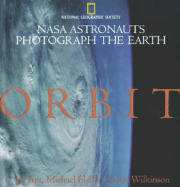
Maps of Mars Available in the Geospatial Resources & Map Collection
The Geospatial Resources & Map Collection has maps of Mars available for those who wish to study the planet in more detail. The GRMC has topographic maps and pictorial representation maps of the Red Planet. The United States Geological Survey published Geology of the Solar System and Planetary Maps: Maps to Help You Find Your Way around on the Moon and Mars and on Some of Earth’s Neighboring Planets and Their Satellites in 1991, and both are available in the GRMC.
National Geographic has published many maps of the solar system, including The Red Planet Mars and A Map of the Heavens. In 2006 National Geographic updated their solar system maps with Eight Planets: The New Cosmic Order, a map showing Pluto as a dwarf planet. These maps are also available for circulation from the GRMC.
The NASA Atlas of the Solar System and Orbit: NASA Astronauts Photograph the Earth are other resources about outer space available in the Atlas Collection.
Please contact the staff of the GRMC for more information about these planetary maps and atlases.













